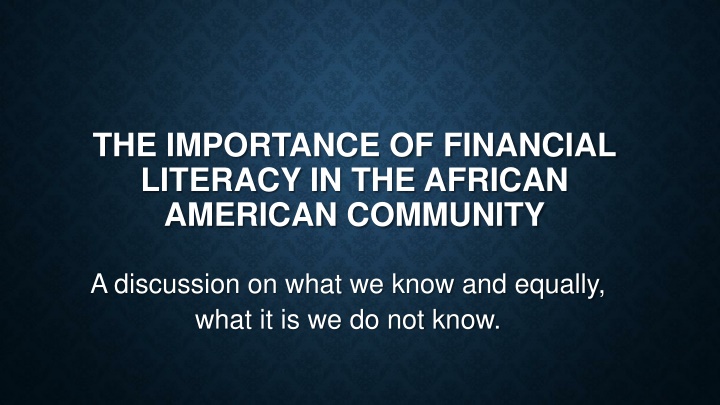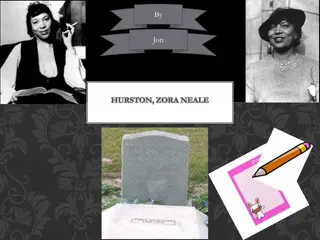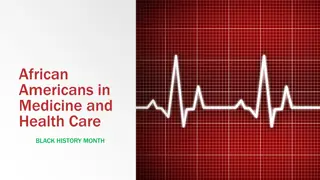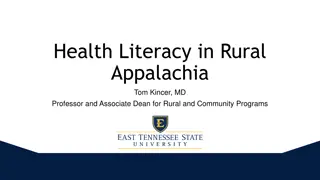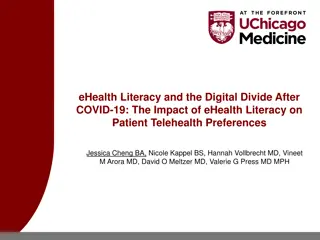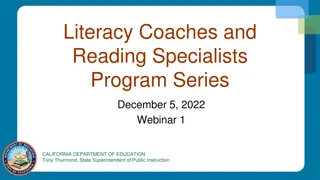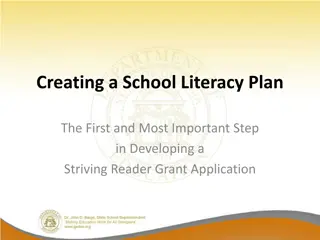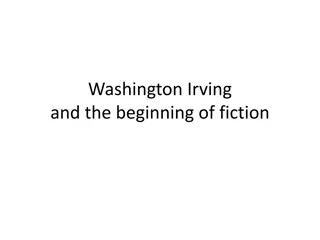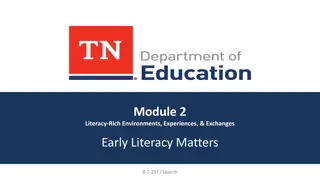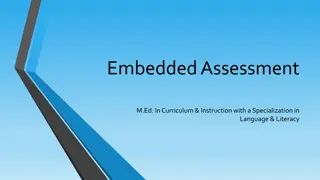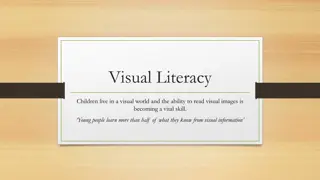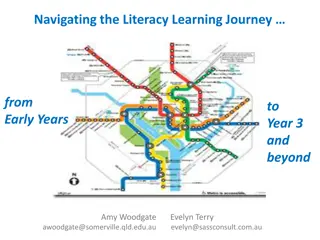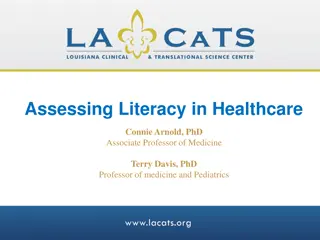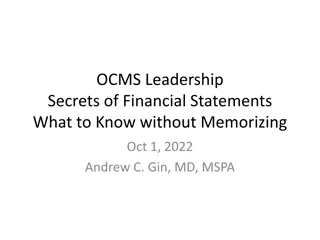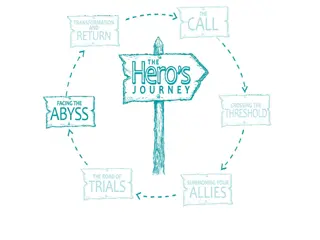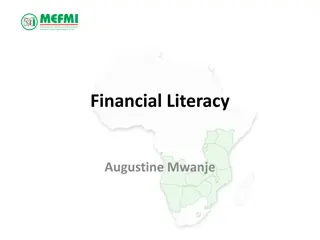Financial Literacy in the African American Community
Discussion on the importance of financial literacy in the African American community, highlighting disparities in financial knowledge and the need for increased awareness. The TIAA Institute-GFLEC Personal Finance Index measures key financial concepts among U.S. adults, emphasizing factors like earning, saving, investing, and managing debt. Addressing the financial well-being gap requires a focus on enhancing financial literacy within the African American population.
Download Presentation

Please find below an Image/Link to download the presentation.
The content on the website is provided AS IS for your information and personal use only. It may not be sold, licensed, or shared on other websites without obtaining consent from the author.If you encounter any issues during the download, it is possible that the publisher has removed the file from their server.
You are allowed to download the files provided on this website for personal or commercial use, subject to the condition that they are used lawfully. All files are the property of their respective owners.
The content on the website is provided AS IS for your information and personal use only. It may not be sold, licensed, or shared on other websites without obtaining consent from the author.
E N D
Presentation Transcript
THE IMPORTANCE OF FINANCIAL LITERACY IN THE AFRICAN AMERICAN COMMUNITY A discussion on what we know and equally, what it is we do not know.
Mr. Sneed serves the Southern California area as Financial Literacy Expert, Retirement Savings Counselor & Financial Coach. I work with individuals, families and small business owners offering financial advice and strategies in the areas of financial protection, budgeting, personal savings and retirement planning. My mission is to help my clients find financial peace of mind and feel more comfortable about their financial future and their money. Gregory J Sneed gregoryjsneed@gmail.com
The TIAA Institute-GFLEC Personal Finance Index (P-Fin Index) measures knowledge and understanding that enable sound financial decision making and effective management of personal finances among U.S. adults. The P-Fin Index is an annual survey developed by the TIAA Institute and the Global Financial Literacy Excellence Center, in consultation with Greenwald & Associates. It is unique in its breadth of questions and its coverage of the topics that measure financial literacy. The index is based on responses to 28 questions across eight functional areas: earning, consuming, saving, investing, borrowing/managing debt, insuring, comprehending risk, and go-to information sources. https://gflec.org/initiatives/financial-literacy-and-wellness-among-african-americans/
The TIAA Institute-GFLEC Personal Finance Index (P-Fin Index) 1. Earning determinants of wages and take-home pay. 2. Consuming budgets and managing spending. 3. Saving factors that maximize accumulations. 4. Investing investment types, risk and return. 5. Borrowing/managing debt relationship between loan features and repayments. 6. Insuring types of coverage and how insurance works. 7. Comprehending risk understanding uncertain financial outcomes. 8. Go-to information sources recognizing appropriate sources and advice.
The Disparity The financial well-being of African Americans lags behind that of the U.S. population as a whole, and whites in particular. The reasons for this gap are complex, but one area of importance in addressing it is increased financial literacy. Personal finance knowledge among African American adults lags that of whites. On average, African Americans answered 38% of the P-Fin Index questions correctly, with only 28% answering over one-half of index questions correctly. The comparative figures among whites were 55% and 62%, respectively. African Americans are less likely than whites to be homeowners (42% and 66%, respectively). Among homeowners, African Americans are more likely to have been late with a mortgage payment in the past year (46% compared with 14%).
African Americans are more likely than whites to carry student loan debt (41% and 21%, respectively). Among those with student loan debt, African Americans are more likely to have been late with a payment in the past year (59% compared with 35%). Among credit card holders, 68% of African Americans engage in expensive credit card behaviors compared with 36% of whites. Such behavior includes paying only the minimum due, incurring late payment fees, incurring over-limit fees, and taking cash advances Forty-two (42%) percent of African Americans who were employed full time engaged in additional work for pay; the comparable figure among whites was 28%. African Americans are more likely than whites to feel that they currently have too much debt (45% and 35%, respectively).
The Lowest and the Highest P-Fin Index Score for African Americans Insuring is the functional area where personal finance knowledge is lowest among African Americans, but it is also essentially just as low in the areas of comprehending risk, investing and identifying go-to information sources. Borrowing and debt management is the area of highest personal finance knowledge among African Americans.
How can the African American Community improve financial literacy? 6 ways to improve your financial literacy 1. Subscribe to financial newsletters from trusted sources. 2. Listen to financial podcasts. 3. Read personal finance books. 4. Consider hiring a financial coach 5. Start keeping a budget. Organize your money electronically. 6. Talk to financial professionals.
Mr. Sneed serves the Southern California area as Financial Literacy Expert, Retirement Savings Counselor & Financial Coach. I work with individuals, families and small business owners offering financial advice and strategies in the areas of financial protection, budgeting, personal savings and retirement planning. My mission is to help my clients find financial peace of mind and feel more comfortable about their financial future and their money. Gregory J Sneed gregoryjsneed@gmail.com
When you feel better about your Money You feel better about your Life
